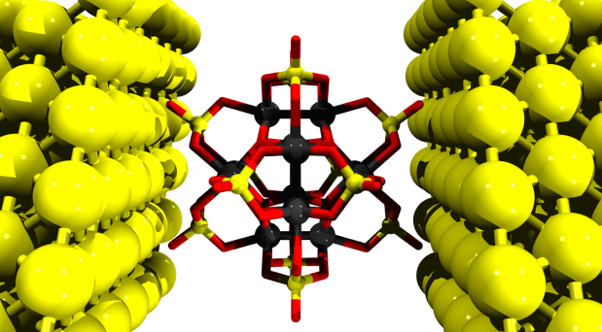Transformable Polyoxometalates, Sustainable Nanoelectronics
Molecular metal oxides, or more notably polyoxometalates (POMs) are being researched for over a century. Their structure benefits from very high stability, whose inherent connectivity relies predominantly on metal-oxygen bonds.
Theoretical insights into the bonding of POMs have been enhancing a paradigm shift in the electronic structure and the property customization of POMs. In this endeavor DFT calculations have had a pivotal role in enabling scientists to capitalize on their valuable insights into POMs and foresee new technological frontiers.
Inspired by Hoberman’s ideas on transformable design, Dr. Kondinski (University of Cambridge) and Dr. Ghorbani-Asl (Helmholtz-Zentrum Dresden-Rossendorf) have recently proposed a “blueprint” on transformable polyoxometalates. The transformability relies on the development of covalently dynamic pairs of metal-metal and metal-oxygen bonds in POMs. The POM of choice is an experimentally reported Pt-based POM, which the community has overlooked for almost two decades. The two scientists have shown that the covalently dynamic pairing of bonds can allow the POM to withstand a broad range of oxidation states and act as a current switch once in the proximity of reducing gold electrodes which currently can be a challenge for other POMs.
Their current work shifts the discussion back to the fundamental definitions. Metal-metal bonds are traditionally absent in POMs, but their emergence appears increasingly important in trailblazing “POMtronics”, that is, various POM-based supercapacitors, nanoelectronics, energy conversion, and sensor materials. Metal-metal bonded POMs have been only recently conceptualized, and their future technological development is envisioned to be guided by computational insights.

A. Kondinski, M. Ghorbani-Asl, Polyoxoplatinates as Covalently Dynamic Electron Sponges and Molecular Electronics Materials, Nanoscale Adv. 2021
A. Kondinski, Metal-Metal Bonds in Polyoxometalate Chemistry, Nanoscale 2021, 13, 13574
Key conceptsADF bonding analysis molecular electronics nanoscience Relativistic DFT